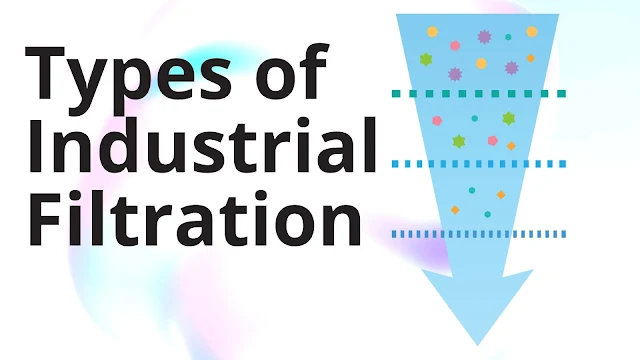There are a variety of types of filtration in the chemical industry, each with its own benefits and drawbacks. Some common types of filtration are Activated carbon filtration, Carbon adsorption, High-pressure filtration, Magnetic filtration, and Pressure filtration.
There mainly are two types of Filtration (i) Constant Pressure filtration and (ii) Constant Rate Filtration.
{tocify} $title={Table of Contents}
(i) Constant Pressure Filtration
Principle of constant pressure filtration: The method in which the pressure drop over the filter is held constant throughout a run so that the rate of filtration is maximum at the start of filtration and decreases continuously towards the end of the run is called Constant pressure Filtration.
If the outside pressure is constant, constant pressure filtration is carried out by applying a certain pressure at the inlet and maintaining it constantly throughout the run.
The constant pressure filtration, the application of high initial pressure results in a low rate of filtration as the first particles filtered will be compacted into a tight mass that largely fills the run whole cycle and is operated at less than maximum capacity.
Constant Pressure Filtration Derivation
Filter medium resistance equation:- dt/ dV = u/A∆[e α V/A + Rm]. --------1.0
When ∆P is constant the only variables in the upper equation are V and t. When t=0, V=0 and ∆Pm hence
uRm/ A∆P = ( dt/dV)₀ = 1/ q₀ --------1.1
Equation (1.0) may therefore be written as:
dt/dV = 1/q = Kc V + 1/q₀
dt/dV = u α c V/A² ∆P + u Rm/A ∆P
dt/dV = Kc V + 1/q₀ -----1.2
Kc = u α c V/A² ∆P
Integrating equation 1.2 between the limits t =0 V= 0 and t = t' V= V
ഽdt = ഽ(Kc V + 1/q₀)dV
t = Kc V²/2 + V/ q₀ ------ 1.3
Rearranging equation (1.3), we get the Constant pressure Filtration Equation.
t/V = Kc/2 V + 1/q₀
Hence, a plot of t/V v/s V is will be linear with aa slogs equal to Kc/2 and an intercept of 1/q₀. From the plot and equations (1.1) and (1.3) the values of α and Rm can be calculated.
(ii) Constant Rate Filtration
The technique in which the pressure drops are varied usually from a minimum at the start of filtration to a maximum at the end of filtration so that the rate of filtration is throughout the run is called Constant rate filtration.
In constant rate filtration, nearly constant rate filtration is maintained by starting at low inlet pressure, and continuously increasing the pressure to overcome the resistance of the cake, until the maximum pressure is reached towards the end of the run.
Constant Rate Filtration Derivation
When filtrate flows at a constant rate, the linear velocity u is constant
u = dV/dt/A = V/At -------- 1.4
We have
α = ∆Pc A/u μ Mc -------1.5
and Mc = cV -------1.6
Substituting u from Equation (1.4) and Mc from Equation (1.6) into Equation (1.5) and rearranging, we get
∆Pc/α = μc/t(V/A)² -------1.7
If α is known as a function of ∆Pc, and if ∆Pm can be estimated, then equation (1.7) can be used for relating the overall pressure drop to time when the flow rate of the filtrate is constant.
A more direct use of equation (1.7) can be made if the equation for cake resistance is α = α₀ (∆P)^s is substituted in equation (1.7) and if ∆Pc is substituted by (∆Pc - ∆Pm) then the result is
(∆Pc)¹─s = α₀ μct (V/At)² = (∆Pc - ∆Pm)¹─s ----1.8
The simplest method of correcting the overall pressure drop for the pressure drop through the medium is to assume the filter medium resistance constant during a given constant rate filtration. Then by equation ∆Pm/Rm = uμ, ∆Pm is also constant in equation (1.8). As the only variables in equation (1.8) are ∆P and t
(∆Pc - ∆Pm)¹─s = Kr t -----1.9
Where
Kr = μ u² c α₀
Equation 1.9 is a constant rate filtration equation.
Take these Notes is, Orginal Sources: Unit Operations-II, KA Gavhane
Read more...
> Rotary Vacuum-Drum Filter Construction, Working Advantages and Disadvantage

